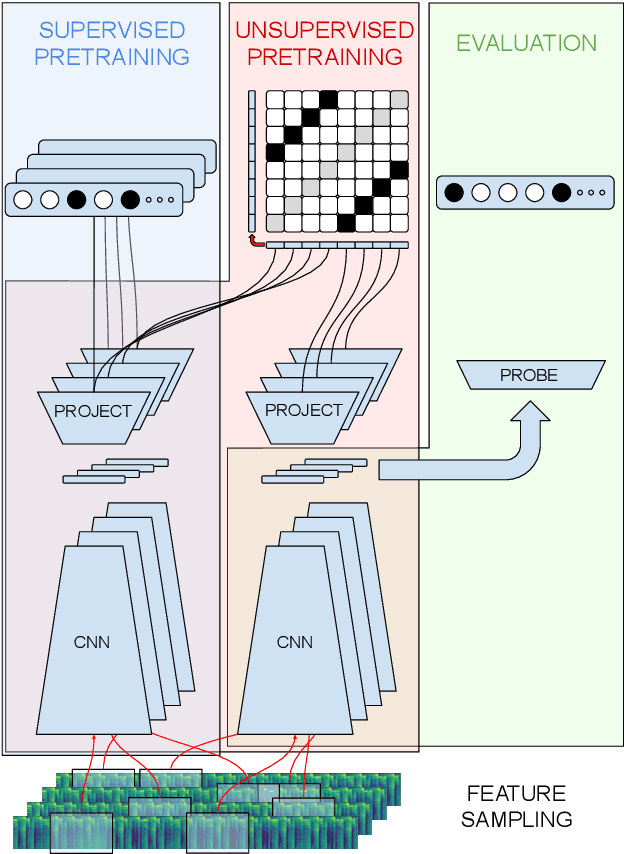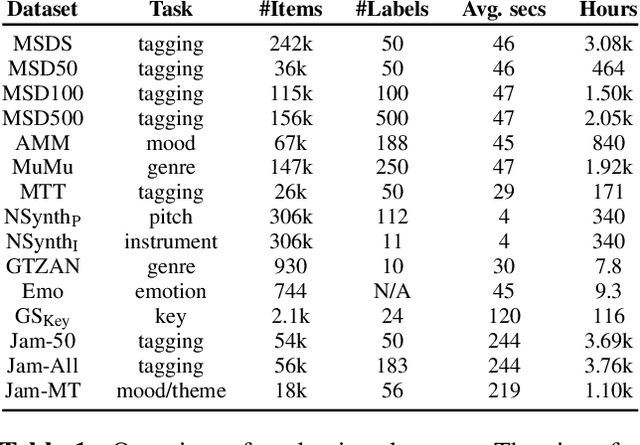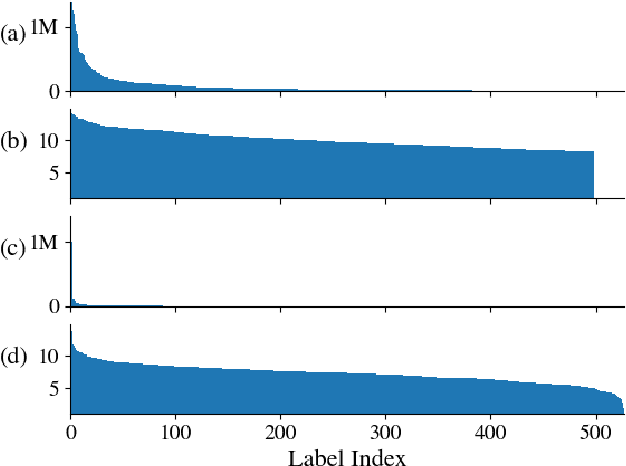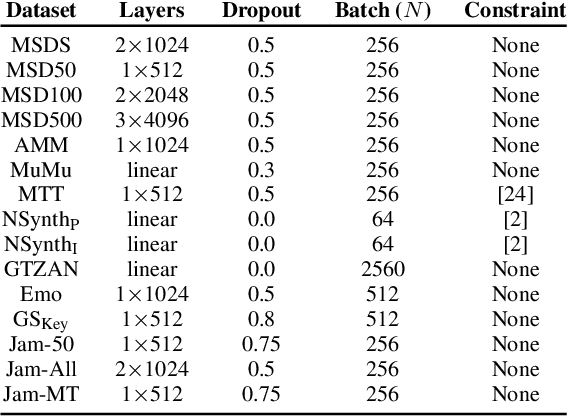Supervised and Unsupervised Learning of Audio Representations for Music Understanding
Paper and Code
Oct 07, 2022



In this work, we provide a broad comparative analysis of strategies for pre-training audio understanding models for several tasks in the music domain, including labelling of genre, era, origin, mood, instrumentation, key, pitch, vocal characteristics, tempo and sonority. Specifically, we explore how the domain of pre-training datasets (music or generic audio) and the pre-training methodology (supervised or unsupervised) affects the adequacy of the resulting audio embeddings for downstream tasks. We show that models trained via supervised learning on large-scale expert-annotated music datasets achieve state-of-the-art performance in a wide range of music labelling tasks, each with novel content and vocabularies. This can be done in an efficient manner with models containing less than 100 million parameters that require no fine-tuning or reparameterization for downstream tasks, making this approach practical for industry-scale audio catalogs. Within the class of unsupervised learning strategies, we show that the domain of the training dataset can significantly impact the performance of representations learned by the model. We find that restricting the domain of the pre-training dataset to music allows for training with smaller batch sizes while achieving state-of-the-art in unsupervised learning -- and in some cases, supervised learning -- for music understanding. We also corroborate that, while achieving state-of-the-art performance on many tasks, supervised learning can cause models to specialize to the supervised information provided, somewhat compromising a model's generality.
 Add to Chrome
Add to Chrome Add to Firefox
Add to Firefox Add to Edge
Add to Edge